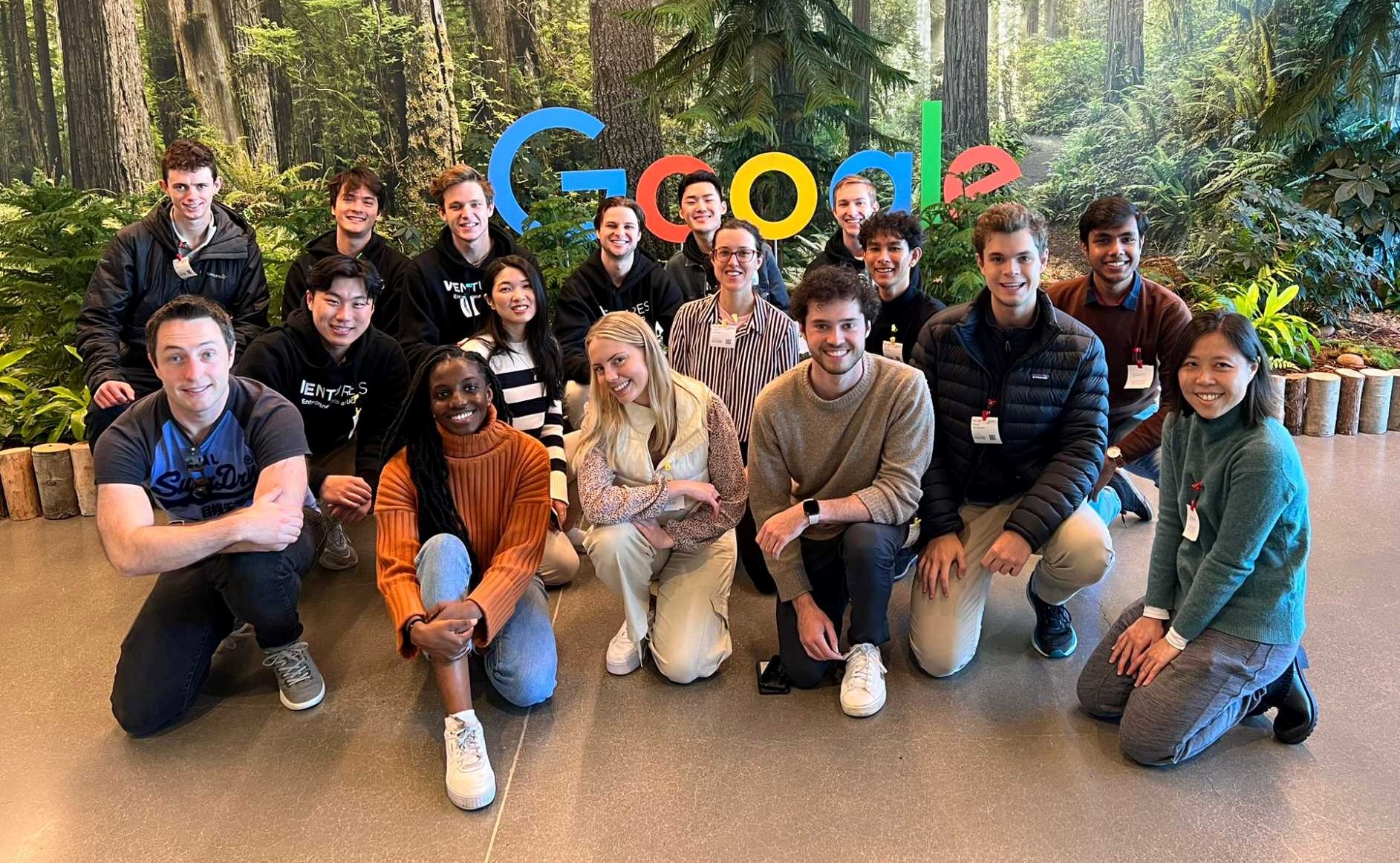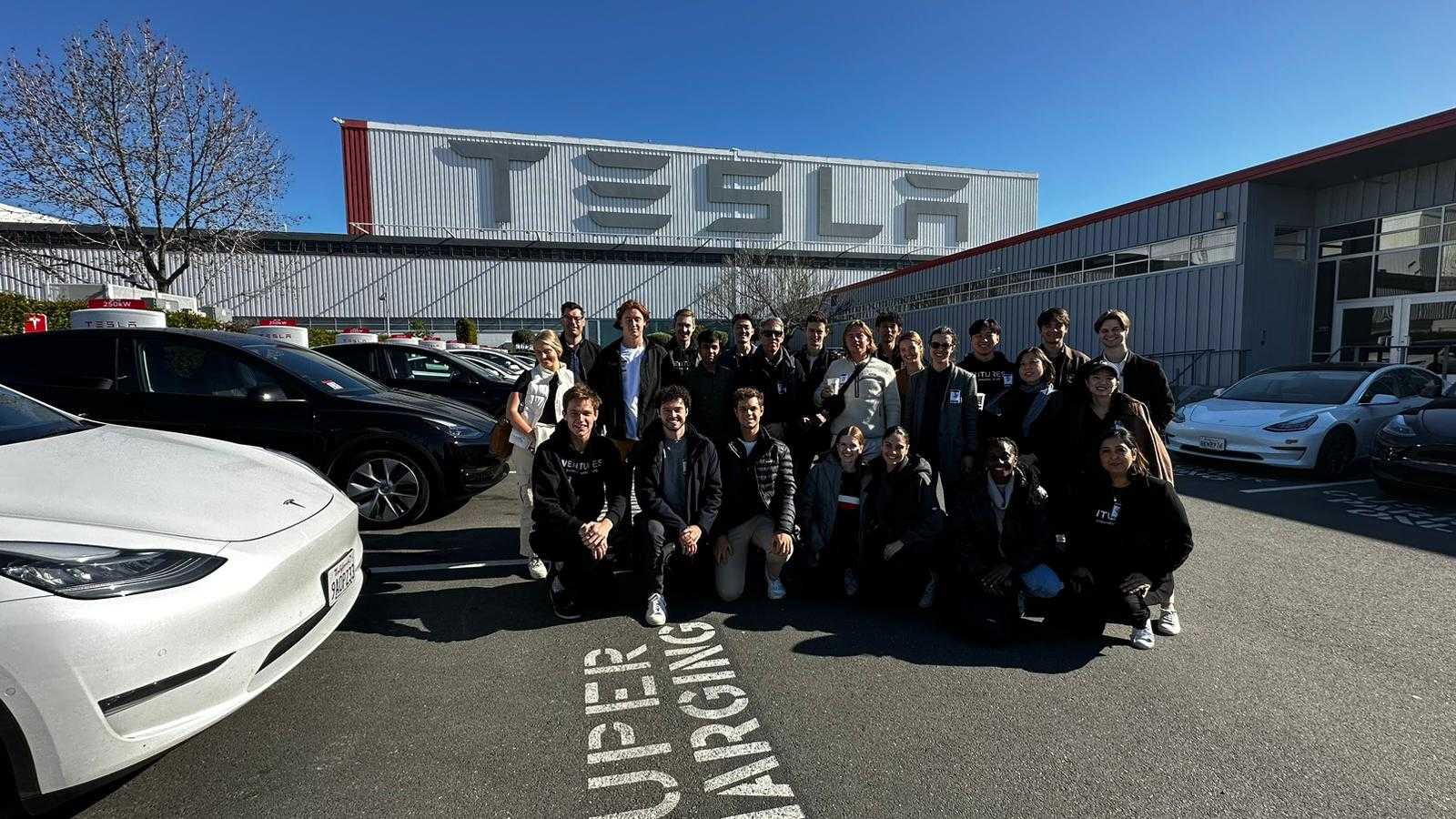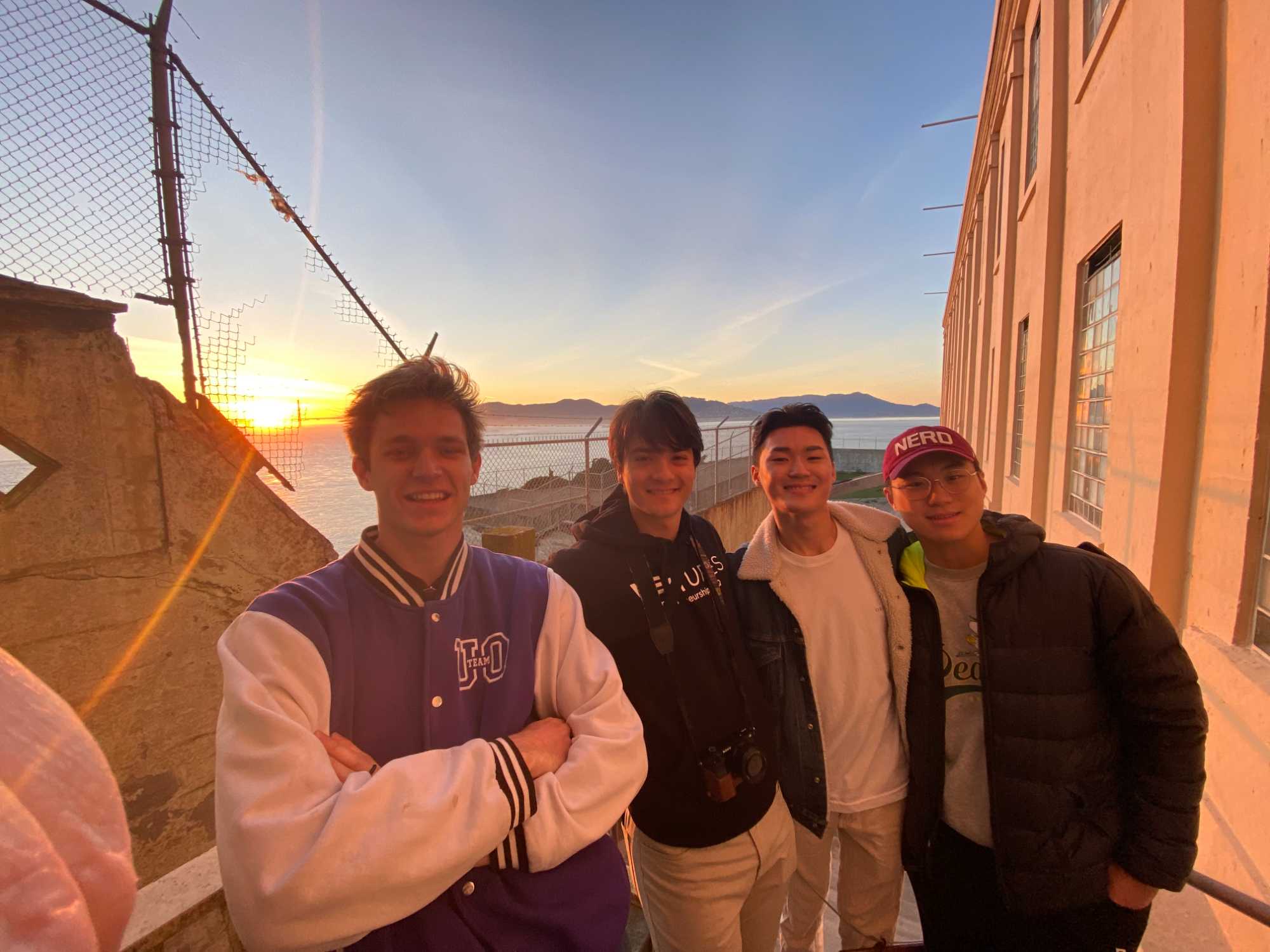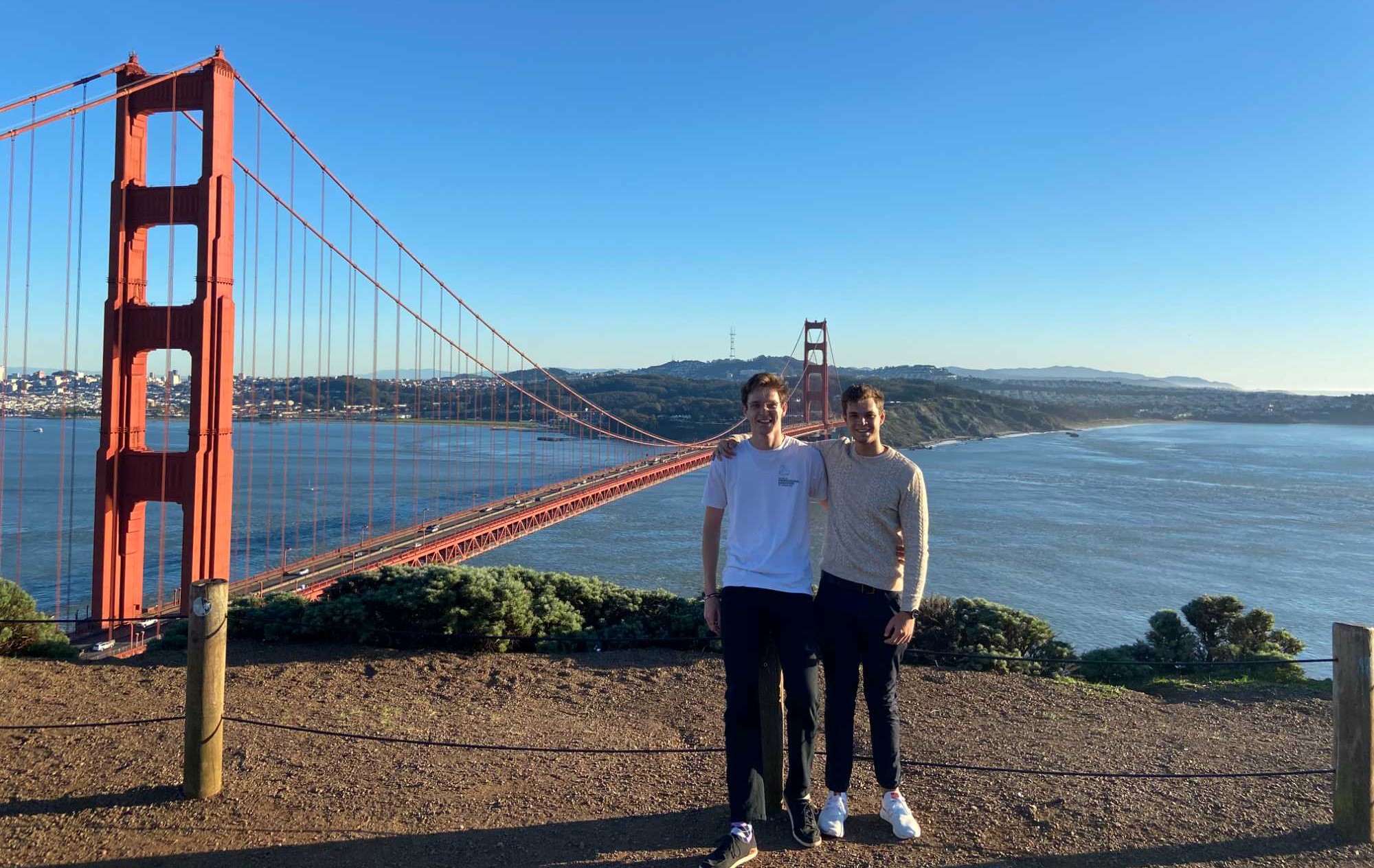Written by Simeon Gover, Bachelor of Engineering (Honours) and Master of Engineering student
After spending a few hours thinking about what to reflect on from the San Francisco Startup AdVenture I realised two things.
Firstly, I was disappointed to be going home from such an awesome trip, and secondly, I’m not a very creative person. What I am, however, is an interminable conversationalist. So instead of repeatedly hitting my head against a wall trying to generate my own ideas, I decided to outsource to the 20 extremely talented peers I was lucky enough to join on the trip.
My methodology was elementary at best. I went to everyone and asked, “what was your biggest takeaway from the trip?” I’ve tried to group their responses into what I would call the 3-key lessons. They are the following: “What makes the Bay Area different”, “It’s all about the people”, and “New perspectives for the future”. Before I get cracking on those
topics, I wanted to say thanks to the students I shared the trip with. It truly wouldn’t have been the same without them. Hopefully if they’re reading this, they can see how their presence and insights on the trip has impacted me.

What makes the Bay Area different?
Scale, main character energy, and SF serendipity
San Francisco is big. Like Big. The scale of business, commerce and innovation is surreal. California has the fourth largest economy in the world, nearly three times the size of Australia’s. Conceptually we have all heard the phrase ‘Silicon Valley’, but I had never been forced to grapple with the reality of what it means. On the trip we were lucky enough to tour some massive facilities; a Meta campus, Google Cloud facilities and Tesla factory to name a few. Across all sites there was a thematic thread as to how they expanded to operate on such extreme scales. Everything they do focusses on incorporating innovation and reinforcing a culture of drive and performance. Innovation is not an afterthought, but rather the entire point to building new spaces and expanding their portfolios. It feels as if through mimesis everything in the city is striving towards bigger and better performance. This perspective towards greatness is not limited to industry either but permeates to every level of the people who live there as well.
The best way to explain the difference in people is an abundance of main character energy. No matter where you go, everyone has an opinion and has this unabashed license to share what that opinion is. Those opinions cover the whole spectrum from giving compliments on an outfit to sharing a vulnerable piece of anecdotal life advice. It’s partly stereotypical to simply accuse Americans of being loud and opinionated, but in its larger part it’s the truth. The falsity of the stereotype is seeing it purely in the negative. Pride is often downplayed in Australia. We suffer chronically from tall poppy syndrome. The ethos in America is one of obligation to share what you are great at so that others can learn from you. Rather than holding back you are encouraged to share and explain what you believe, and more importantly, why you believe it. Although jarring at first, the difference in communication was a refreshing change. There’s a lot for us to learn from the American ethos of sharing in your achievements and bringing others along with you. A sharing that leads to chance encounters and incidental opportunities.
The final, and in my opinion greatest difference between Australia and the Bay Area is what we coined “San Francisco Serendipity”. The magnitude of the industry combined with a culture of sharing and talking produces breeding grounds for serendipitous opportunities. There’s an endless number of examples I could list here from our trip, but I want to focus on just one. At a random café for brunch, one of us recognised the ‘OnDeck’ (a VC firm in SF) branding on someone’s jacket. A quick introduction led to a two-hour conversation with a VP at OnDeck about his career, how he happened to come from Australia as well and things he learnt moving to the US and so much more. He went on to explain that SF has a ‘plus one’ culture. What he meant is that people want to make introductions and give you the opportunities to expand your network. The plus one culture compounds the already considerable serendipitous opportunities to create a city that is the place to be if you want to build your network, find other passionate people and grow.
It’s all about the people
Why to ask, and, more importantly, how to ask

The only commonality for success SF was an impressive network. Whether they spoke at fireside chats, gave presentations, tours or just otherwise bequeathed us wisdom, the single greatest emphasis was placed on people. There were three key examples as to why this network is so important to flourishing in such a competitive environment. Firstly, you can lean on them when things go wrong. No one will tell you being an entrepreneur is easy – so you need a support network there to help you through the tough times when you want to throw in the towel. Secondly, a network can help you give a leg up. Synergy has limitless potential. Only by reaching out for help and establishing connections can you compete in such an ambitious environment. Finally, your network is a gateway to accessing more serendipitous opportunities. As I wrote above, SF is a machine at enabling lucky breaks, but only if you capitalise on the network and people that are working in the area as well. You don’t need to be the smartest, have the best ideas, or even a clue about the future. If you have a network and the resolve to keep working and moving forward, then you have everything you need for success.
So, what are the necessary ingredients to building a fruitful network? Three core pieces of advice shone through from the diverse speakers and different responses the other students gave. They are as follows.
Have a bias towards action: The first thing you need to improve your network is more action. Find someone interesting on LinkedIn? Send them a connection request. Talk to someone at a networking evening? Follow up with a coffee chat to network with them further. Ninety percent of the time the invitations to connect or catch up are warmly received. The other 10% will probably ignore you, but you can get over that quickly with a bit of rejection therapy.
Update your pitch: One of the shrewder insights I heard from another student was around the difficulty of pitching yourself on the other side of the world. In Australia we can rely on our location to give context to introductions such as ‘I study Law at UQ’, or ‘I interned at Fulton Hogan’. During the trip however, this no longer cut it as an introduction. Your audience doesn’t know the same mental shortcuts to understand what you have done and are interested in pursuing. Make sure that you can break things down either into the local context, or better yet, update your self-pitch to not rely on the broader context. Pitch what you are passionate about rather than what you are doing or have done. Pitch what you want to do, who you want to be, and why that’s relevant to those you’re talking to.
Have an ask: even if you don’t know what it should be. An ask serves a whole variety of purposes. Perhaps most importantly it gives the person you’re talking to a reason to think about you again. If you leave a conversation without posing some need or desire, then it is unlikely you’ll hear from them again. For what reason need they to contact you? Instead, try to include a small ask at the end of a conversation. A great starting point we were given was to have an ask surrounding improving your own network. Such as ‘it’s been great talking to you, say if you know of anyone else in the [insert area of interest] space that would be open to having a coffee with me I’d really appreciate an introduction’. A further benefit to these asks is that they play into the human desire to want to help people. Allowing others to help you builds their trust and the depth of the relationship you can form.
New Perspectives for the Future
A higher bar, soaring jumps, and untrodden paths

Australia is a great place to live. Brisbane too with its fantastic weather, accessible nature, and laidback lifestyle. However, Brisbane has a comparably low bar definition of success. San Francisco doesn’t. One of the great things about being in San Francisco is the proximity you have to astronomical levels of success. Everything is on a completely different playing field. The companies are bigger, the talent is brighter, and the competition is hungrier to be successful. Everyone in the Bay Area is playing to be the next big thing and trying to lift the bar even higher. A bar that’s already incomprehensibly high compared to that of Australia. When you ask people that have made the move and taken their ideas to such a competitive landscape, they will all tell you it was worth it. The rewards you can reap by immersing yourself in the culture of Silicon Valley are immense. It isn’t just that the ceiling for your company is higher. There’s a rich body of mentors, networks, and potential co-founders with the capacity to catapult you to new summits.
Our immersion in the area caused a great deal of rumination surrounding our future careers. Detailed plans were interrupted by a new array of other doors and opportunities on the other side of the world. Some were adjacent to original plans and yet more still showed pathways that we had never considered. Coming back from the trip some people commented on how they were happy to return to Brisbane for its relaxed lifestyle and to settle back into an easy routine. Many more though were looking into the new opportunities afforded to them. Looking at ways, more often than not, that led back to ‘the land of opportunity’ to push themselves higher and see just how far they can go.
Closing remarks
This trip truly was something special. It’s worth appreciating the unique situation university students can capitalise on. This is the last time you can go to another country for a month to learn, to live, and to experience new things, without having to worry about life back home. The three lessons above don’t come close to encapsulating the simultaneous depth and breadth that each of us took away from the program. Trying to detail an exhaustive account of learnings and insights would be futile. The only way to understand is to do it yourself. So, what are you waiting for? Apply.

